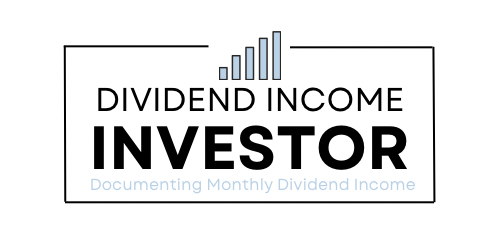Now that the financial goals for 2019 have been established, it’s time to provide a personal finance recap on last year’s financial goals.
I figure that it doesn’t make sense to discuss my goals publicly without sharing the results as well. The point is to hold myself accountable.
Overall, I am satisfied with what I accomplished in 2018. I’m in a much better place financially this year because I had a plan.
Here is my personal finance recap for 2018.
1. Earn at least $385 in dividend income
Pass – $390.19 was earned.
I passed my first goal by $5.19. It was close but it still counts as a pass. Of course, I must admit that $385 was not the original target. I provided guidance half way through the year after realizing I would not be able to meet my target of $425.
Nevertheless, I was still able to reach my new target of $385. That indicates I became more accurate during the second half of the year. Hopefully my new target of $670 is within reach.
2. Grow Forward Dividend Income to $650
Fail – $524.92 reached in January.
I failed to reach my goal of $650 in forward dividend income. I seem to be moving at a slightly slower pace than anticipated.
Of course, this has happened naturally as I’ve fallen back into my value investor roots. I will still choose a lower yield from a high quality stock as opposed to a high yield from a riskier asset.
Plus I’ve been speculating in the cannabis industry. I’m still nibbling at cannabis stocks here and there when prices decline. However, I am limiting the size of this sector in my portfolio. I discussed the concept of using 10% or less of your portfolio’s value in my post on protecting wealth in the cannabis industry. I am currently sitting at about 5-to-6% of my portfolio’s value invested in the space. It’s not a lot. But it took some of the money that could’ve been invested into dividend stocks.
In response to this miss, I set a forward dividend income target range. I am aiming to drive forward dividend income to at least $800 this year.
3. Save 32% more than last year
Fail – but I did increase savings.
Rather than continue to work in percents to disguise my savings amount, I decided to make the amount public for 2019. After all, the point is to motivate myself to save more money. I’ve got nothing to hide.
I realized that I’m trying to prove that financial independence is possible on any level of income. Saving 50% of your income is incredible. But it’s not possible for everyone, and I think lower income earners feel that it’s not possible to build wealth without a high income.
In my opinion, anyone can become wealthy if they are capable of sticking to a plan. I intend to prove that over time.
Anyways, I saved a total of $5594.15 in 2018. If I include dividend income, I saved $5974.34. By comparison, I saved $5298.04 in 2017, and $5356.18 if I include dividends. So I saved $618.16 more in total, which works out to 11.5% more than 2017. That’s acceptable but I still failed to reach the target.
This year I am setting the target at $6,000.
4. Increase savings rate by 0.025% for house and emergency fund
Pass.
I am happy to report that I achieved this goal. I managed to maintain the slight increase to my cash savings throughout the year.
I will admit that I dipped into the money a few times. But I’m definitely getting better at avoiding that, especially now that interest rates are rising.
I plan on maintaining a contribution to a high interest savings account. I keep it separate from the rest of my investment accounts on purpose.
Ideally, I will consistently maintain a cash position worth 10% of my portfolio’s value. That may increase down the road.
5. Streamline the accounts and control the cash flow
Pass.
Part of me wants to mark this goal as a failure, because my money felt out of control at times during the year.
But at the end of the day, I met most of my goals. I saved more money and paid off debt. I am in a better financial position because of how I managed my cash flow. So that’s why this goal is a pass.
Furthermore, I’ve improved at managing cash flow to start off the new year. I am being much more realistic and balanced with the allocation.
To put it bluntly, it’s easy for me to go overboard with savings at times. I end up leaving myself short on spending money. On the other hand, it’s also easy for me to overspend.
As such, I’m focussed on an addition by subtraction approach. I am betting that a more balanced approach will lead to a higher savings rate overall.
6. Pay my student loan down to less than $6,500
Pass – it’s at $6364.77.
My student loan is finally down to an amount I can pay off within a year. This is incredible.
Similar to my approach with saving money, I have been consistent with payments.
It’s going to be a massive weight off my shoulders once I get this loan paid off. It will feel like a raise.
I set the goal of paying it down to at least $3,500 this year. However, I’m tempted to just pay it off. It will be even more tempting to pay off once it gets below the $5,000 range, which won’t be too long. I will be making another payment today!
Personal Finance Recap Conclusion
I achieved 4 out 6 financial goals which is acceptable.
But this year I want to be more accurate. I want to report that I went 4 for 4 in the 2019 personal finance recap.
In turn, I set 4 simple goals that are based on my 2018 performance. I have stepped them up slightly instead of setting stretch targets. And it’s easier to project dividend income now that I’ve got another year of investing under my belt.
In summary, I saved a total of $5594.15 in 2018, which was 11.5% more than last year when including dividend income. $390.19 was received from dividends during the year. Additionally, I paid off $2394.73 worth of student loan debt. My loan is now down to $6,364.77 before today’s payment. It was a progressive year towards becoming debt free and speeding up my savings to reach financial independence.


 Advanced Blogging Goals for 2019
Advanced Blogging Goals for 2019
